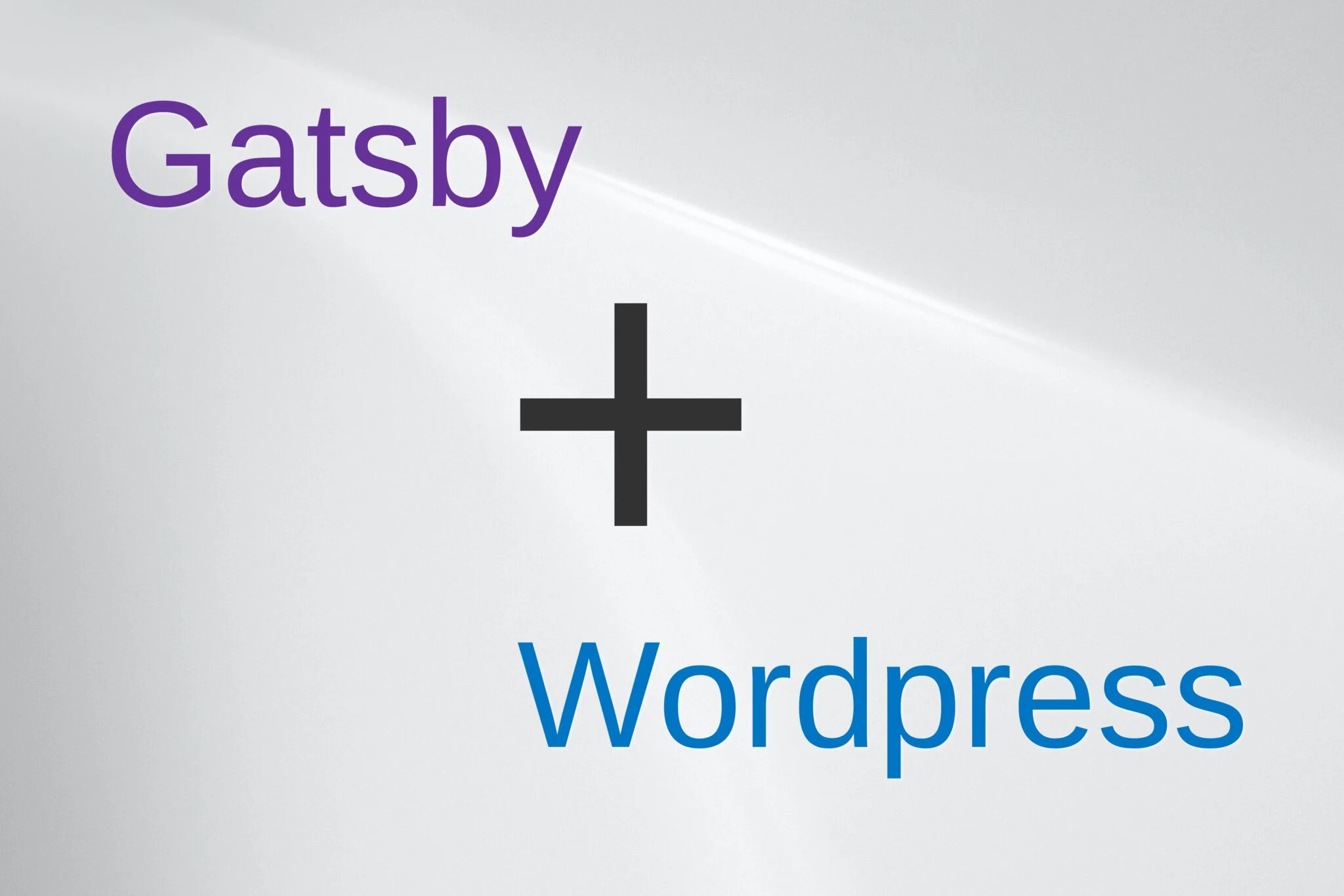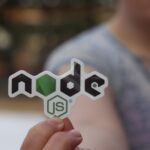Gatsby WordPress
Gatsby is a static site generator. When we create a Gatsby website, the pages are developed in advance and then filled to visitors instantly when they land on the site. Traditional (dynamic) sites, like those traditionally created on WordPress, rebuild the web page each duration it’s viewed, even if you’re the same user browsing multiple/duplicate pages. They use slow scripts to build the page, while at the same period pulling text from the database, causing more of a lag. Because Gatsby pages are pre-built, user knowledge is exponentially faster because pages don’t need to be pulled together on command – they’re already there. To learn more regarding why we use Gatsby as a platform our opportunity.
What is it and why do we use Headless WordPress?
Headless WordPress refers to the combining of a WordPress backend (admin dashboard – how you edit the site), with a different front end (the website your users visit). In our case, were pioneered a method to connect the familiarity of the React-based Gatsby front end with the WordPress backend. There are different headless CMS (content management system) platforms you can utilize, but with WordPress existing as the most increased CMS in the world, it’s the obvious option for a seamless upgrade to a Gatsby front-end.
In 2020, over 455 million websites operate WordPress as a host. That’s around 35% of all websites on the internet. People are comfortable with the familiarity of a WordPress backend when it comes to performing their content, including blog &site updates – but they’re slowly & small reliable in the front end. Building sites operating Headless WordPress permits us to reap the advantages of the Gatsby front end & lightning-fast, safe websites, and build beautiful while maintaining the comfort of use of the WordPress back end.
Headless CMSs
As mentioned before, Headless CMS is one without a declaration layer. As a result, content is supplied via an API (RESTful or GraphQL) to separate the frontend app that then gives it. The API makes content available to any channel and device using a variety of devices and programming languages with a higher level of protection and scalability.
Essentially, CMS is decoupled from frontend concerns, which in turn frees developers to make rich experiences for end-clients, using the most suitable technology open. A “decoupled” or “headless” method is presently supported by CMSs, which paved the way for Gatsby sites. So, to leverage headless CMS, you’ll be supported to Make a site or app, then use CMS’s API to plug your content.
The WordPress Headless CMS execution
Concerning the chronology of events shared above, we have noticed how WordPress ended up effectuating a Headless CMS. WordPress Contains an API (Application Programming Interface) that allows you to extend it with plugins (essentially as an ‘application framework’). In particular, this is achieved via the REST API as we shall later.
However, one of the key concepts of the WordPress API is hooks. Basically, hooks allow plugins to change WordPress core functionality. Practically, Hooks work in a way that when a certain event in WordPress occurs (for instance, page load, or post-edit), WordPress calls a certain hook to run the function.
Specifically, hooks are split into ‘Actions’ and ‘Filters’. Actions can be leveraged to run certain PHP functions in certain events, though the functions don’t need to return anything. While Filters can be utilized to run functions that WordPress passes data through during certain events with these functions taking data in as a parameter and returning a modified version of the data.

Is Gatsby a headless CMS?
Gatsby is a popular open-source framework for building modern web applications, particularly static websites. It is designed to simplify the process of developing high-performance websites by leveraging the power of React, GraphQL, and other modern web technologies. One question that often arises in discussions about Gatsby is whether it is a headless CMS.
In this blog post, we'll explore what a headless CMS is and whether Gatsby can be considered one.
First, let's define what a headless CMS is. A traditional CMS, or content management system, typically consists of two parts: a content management application where content creators can create and manage content, and a delivery application where the content is published to the website.
These two parts are tightly coupled and cannot be separated. In contrast, a headless CMS decouples the content management application from the delivery application, allowing developers to use any front-end framework or technology they want to deliver content to the end user.
With a headless CMS, content is stored in a central repository and made available through an API, which developers can use to pull content into their applications. This approach provides more flexibility and allows developers to build custom front-end experiences that are optimized for their specific use case.
So, is Gatsby a headless CMS? The short answer is no. Gatsby is a front-end framework that is designed to work with any back-end content source, including headless CMS platforms. In other words, Gatsby can consume content from a headless CMS and use it to build a website or web application. However, Gatsby does not provide content management functionality or serve as a standalone CMS.
Many headless CMS platforms can be used with Gatsby, including Contentful, Sanity, Strapi, and Prismic. These platforms provide a way to manage content separately from the presentation layer and deliver it through an API, which Gatsby can consume. By using a headless CMS in conjunction with Gatsby, developers can create high-performance websites that are optimized for both content management and delivery.
In conclusion, Gatsby is not a headless CMS, but it can work with headless CMS platforms to create high-performance websites. By decoupling content management from delivery, developers can build custom front-end experiences that are optimized for their specific use case. If you're looking to build a static website or web application with Gatsby, consider using a headless CMS as your content source to get the most out of this powerful framework.
What is headless Gatsby?
Gatsby is a popular static site generator that helps developers build fast and performant websites using React. One of the features of Gatsby is the ability to run as a headless CMS, meaning it can be used to build front-end interfaces for various content management systems (CMS) or data sources without having a built-in content management system. This approach is called Headless Gatsby.
In traditional web development, a CMS like WordPress or Drupal handles both the front-end and back-end of a website. However, Headless Gatsby decouples the front end from the CMS, allowing developers to use Gatsby as a front end for any CMS or data source. This means that the CMS can focus on managing content and data, while Gatsby handles the presentation and user interface.
The benefits of Headless Gatsby are numerous. First, it allows developers to leverage the strengths of both Gatsby and their CMS of choice. For example, they can use Gatsby's fast page rendering and React components, while the CMS can handle content management and publishing workflows. This approach also makes it easier to switch between CMSs or data sources without affecting the front end.
Another advantage of Headless Gatsby is that it allows for more flexibility and customization in the front end. Since Gatsby is a React-based framework, developers can easily create custom templates and layouts to display content in unique ways. This flexibility extends to other data sources as well, such as APIs or databases.
Setting up Headless Gatsby involves connecting it to a CMS or data source using GraphQL. GraphQL is a query language that allows developers to request specific data from a CMS or data source. With Headless Gatsby, developers can use GraphQL to pull data from multiple sources and combine them into a single, unified front end.
In conclusion, Headless Gatsby is a powerful approach to web development that offers flexibility and customization, allowing developers to leverage the strengths of both Gatsby and their CMS of choice. With Headless Gatsby, developers can create performant, user-friendly websites that are easy to manage and update.
Which headless CMS is best for Gatsby?
When it comes to choosing a headless CMS for Gatsby, there are several options available in the market. A headless CMS is a content management system that provides content without the need for a front-end system. This makes it an ideal choice for Gatsby, which is a static site generator that relies on content being delivered through APIs. In this blog, we will discuss some of the best headless CMS options for Gatsby.
Contentful
Contentful is a popular headless CMS that offers a user-friendly interface for managing content. It provides an API-first approach that can be easily integrated with Gatsby. It also has a rich set of features such as version control, webhooks, and a built-in image editor. Contentful offers a free plan that includes up to 500 entries and API requests per month.
Strapi
Strapi is an open-source headless CMS that is built on Node.js. It provides a flexible content modeling system and allows developers to create custom APIs for their Gatsby sites. Strapi also includes a robust set of features such as user authentication, email notifications, and content localization. It is free to use and offers a wide range of plugins and extensions.
GraphCMS
GraphCMS is a GraphQL-based headless CMS that provides a powerful API for delivering content to Gatsby. It offers a visual content modeling interface and supports multiple content types, relationships, and custom fields. GraphCMS also provides a built-in image editor and webhooks for automating tasks. It offers a free plan that includes up to 1,000 content entries.
Sanity
Sanity is a real-time headless CMS that provides a collaborative content editing environment. It offers a customizable content modeling system and supports a wide range of content types such as text, images, and videos. Sanity also provides a powerful query API that can be easily integrated with Gatsby. It offers a free plan that includes up to 3 users and 500 content entries.
DatoCMS
DatoCMS is a modern headless CMS that offers a simple and intuitive content editing interface. It provides a GraphQL API that can be easily integrated with Gatsby. DatoCMS also offers a flexible content modeling system and supports custom fields, relationships, and validations. It offers a free plan that includes up to 2,000 records and API requests per month.
In conclusion, all the headless CMS options mentioned above are great choices for Gatsby. Choosing the best one depends on your specific needs, preferences, and budget. Therefore, it is recommended to evaluate each option based on its features, pricing, and ease of integration before making a final decision.
Can you use headless CMS with WordPress?
Maintaining up with the ever-expanding Internet of Specialties can exist a scramble for content creators and programmers interchangeably. Overwrapping content from a conventional WordPress performance for better and additional client-side endpoints (such as clever lecturers or surveillance) can place total pressure on your aids. That’s where the idea of headless Content Management Systems arrives in. The headless CMS procedure delivers better flexibility on the rear end of content management while providing developers entrance to the front-end tools they decide to operate. It even allows you to operate the exact bucket of content for multiple various results. Require an entire focus on the Headless WordPress CMS? we will examine how a WordPress website can operate as a headless CMS resolution and what some of the advantages exist to this procedure. We will again confer on how to host a headless WordPress structure.
What Exists as a Headless CMS?
A headless content management system is not inevitably a spick-and-span idea. Before the agile and available management interface, we learn and love WordPress, there existed databases of range with short beautiful front-end delivery methods. Codes or questions were used to remove content along with the user.
Headless WordPress Content Management System
WordPress is occasionally directed to as a monolithic CMS. This suggests that, while it accomplishes include a powerful rear end for content innovation and association, it exists even made to exist rather concerned with front-end production. WordPress again covers production functionality into themes and plugins, so the front and rear ends exist linked jointly.
Is headless CMS better than WordPress?
either in blogging or e-commerce, headless includes existed all the popularity in contemporary years. Among the multiple advantages of decoupled architecture exist more significant structure independence, quickness, and a more downward Complete Price of Ownership. Yet, headless content management is not a fresh idea. Before WordPress even increased to its global hegemony as the planet's multiple famous CMS, websites stored content in databases, and queries were used to draw it from databases to the users.
The headless system to web architecture exists only a better contemporary taking on this structure and something that has been increasingly acquiring traction in a multi-device globe. In a headless content management system, the system lives only for content information, editing, organizing, and sorting on the rear end.WordPress, on the different indicator, is a famous model of a monolithic CMS a configuration where the back end and front end constitute one commodity. Headless procedures observe a structure perspective in which such a configuration is decoupled. Among the multiple structural benefits of the architecture, a headless CMS allows you to future-proof your site.
A headless CMS is a focused API-first method, which provides you more excellent pliability to relocate your content in the destiny, as you are not fastened to themes and plugins. Content can invariably always be accessed unaided by the front end used to exhibit it, permitting you to voluntarily transform the front end and exhibit the content on any numeral of the latest devices. In a headless setup, the rear end is used for content innovation and association.
Is headless WordPress a good idea?
Headless WordPress can be useful in some typical procedures. We will converse about some of the benefits of headless WordPress in those. Many developers accept that headless WordPress can be applied to develop a much quicker WordPress website. By splitting the front end of the site operating technology such as React.
Benefits of Using Headless WordPress
- Headless WordPress Can Exist as a Quicker Than Regular WordPress Website
Many developers accept that headless WordPress can be applied to develop a much quicker WordPress website. By splitting the front end of the site operating technology such as React.js, many developers attempt to provide better effective code than most WordPress themes.
- Merge Headless WordPress Data into Different Apps
Let’s express you own a portable app and directly you desire to incorporate your blog or different section from your WordPress website into that app. Headless WordPress can support you take your WordPress data into different apps, and you can operate other technologies to develop a consistent user experience.
- Post on Considerable Platforms via Headless WordPress
You can operate the data in your marketing movements, camp on social media platforms, operate it on IoT gadgets such as clever speakers, provide a synthetic espionage device, attach it to virtual associates, and better.
- Headless WordPress is distant better and more inexpensive than ownership of headless CMS
Headless WordPress is distant better inexpensive and more effective than proprietary enterprise CMS resolutions like Contentful which intention effortlessly budget you tens of thousands in hosting isolated (not involving development charges).
How to set up a headless WordPress website (using AWS)?
In theory, you can host a static copy of the website with any provider you want. However, for this example, we’re going to use AWS because it works out of the package with the plugin we will feature. Here is how to get started.
Step 1: Set up the AWS account
AWS requires a little better legwork than a traditional web host. However, using this platform can be incredibly affordable for static websites. In fact, it may cost you as small as $0.50 per month.
For a headless WordPress structure, you’ll want to utilize the Amazon S3 tier, which offers 12 months of hosting for free:
Signing up for your account should be fairly straightforward – Get created with the Amazon S3 button & fill out the needed fields in the signup form.
Note that if you’re already logged into your amazon account, the button will read Complete Sign Up instead. The method is the same, you simply won’t be requested to re-enter your email address and login credentials.
Step 2: Generate a static copy of your website
This setup to work, you still require to install WordPress somewhere so you can use it as the back end of your site, and generate static content for the front end. To avoid paying for two different hosting providers, one solution is to make a local WordPress installation.
There are several methods you can set up a local WordPress website, including
Making a full local WordPress environment operating a tool such as XAMPP
Using software such as Local by Flywheel set up local WordPress installations
In this case, Local by Flywheel presents a better user-friendly method. Download and install the software, then set up a new local website.
Step 3: Auto-deploy static pages to an AWS
Before you can begin deployment, you’ll need to enter both your access key ID and private access key. Keep in mind the access key ID requires to have the correct permission levels for the deployment to work. Here’s a quick guide on how to obtain both keys from your AWS account.
What is headless CMS in WordPress?
WordPress is one of the most favored content management systems (CMS) in the world. It powers more than 40% of all websites on the internet, according to recent statistics. WordPress has evolved over the years, and one of its latest developments is the emergence of headless CMS. In this blog, we will discuss what headless CMS is in WordPress and its benefits.
Traditionally, a CMS is a platform that allows users to create, manage, and publish content on their websites. In WordPress, the CMS handles both the content management and the presentation layer. However, with the emergence of headless CMS, the presentation layer is separated from the content management layer.
Headless CMS is a content management system that only focuses on creating, storing, and managing content. It does not provide any front-end interface for content delivery. Instead, it serves content through an API (Application Programming Interface), which developers can use to fetch and display the content in any front-end platform or application.
With headless CMS, content creators and editors can focus on creating and managing content, while developers can focus on building custom front-end experiences using their preferred technology stack. For example, developers can build websites or web applications using popular front-end frameworks like React, Angular, or Vue.js, and fetch content from the headless CMS using APIs.
One of the main benefits of using headless CMS in WordPress is flexibility. Developers can create custom front-end experiences that are tailored to specific requirements, such as mobile apps, IoT devices, or voice assistants. Since the content is served through APIs, it can be consumed by any platform that supports HTTP requests.
Another benefit of using headless CMS is that it allows for better scalability and performance. Since the presentation layer is separated from the content management layer, the CMS can handle a larger volume of content without affecting the performance of the front end. Also, since the front end is decoupled from the CMS, developers can optimize the front end for performance without affecting the CMS.
In conclusion, headless CMS in WordPress is a trendy approach to content management that divides the content management layer from the presentation layer. It provides flexibility, scalability, and performance benefits, making it an ideal choice for developers who want to build custom front-end experiences. If you are planning to build a website or web application that requires a custom front-end experience, consider using a headless CMS in WordPress.
How do I convert WordPress to Headless CMS?
Operating WordPress as a headless CMS is an ingenious idea that is getting more users into the WordPress ecosystem, and the main cause for this is that it can be integrated with practically any language or framework without surrendering the powerful editing abilities that the plurality of users are familiar to. The marketing and content teams can operate the WordPress interface while the development team can operate their famous tools like React and GraphQL in a common. Git roadmap with headless WordPress.
It is worth commenting that some Headless CMS, not just concentrates on delivering you the services already delivered by a CMS like WordPress. It even delivers services such as photo CDNs to alter or change the format of your images on the speed, or extra security through S3 backups. Maintaining this arrangement will not just provide you freedom, protection, and support, but will even enhance the implementation of your application without third-party favors. Only by combining your front-end project through an HTTP client and bringing the elements and data.
The Advantages Of Going Headless CMS
WordPress architecture usually accomplishes not deliver the opportunities we occasionally require when operating on a website, particularly when it comes to optimizing implementation, one of the considerable meaningful issues when ranking our site in a search engine like Google and particularly directly that Web Vitals is alert and running.
While it is evident that if we include a private site that just we perform on, then it’s not necessary to relocate it to a headless configuration. Yet, if additionally, individuals are interested in that project.
What are the pros and cons of WordPress headless CMS?
WordPress is a popular content management system (CMS) that is widely used for building websites and managing content. In recent years, a new approach to using WordPress has emerged, known as the headless CMS. In this model, the front end of the website is separated from the back-end content management system, allowing for greater flexibility and customization. In this blog post, we will explore the pros and cons of WordPress headless CMS.
Pros
- Flexibility and customization
With a headless CMS, developers have more control over the front-end design of the website, allowing them to create a fully customized experience for users.
- Better performance
Separating the front-end and back-end of the website can lead to faster load times and improved performance.
- More scalability
Headless CMS allows developers to build websites that can handle large amounts of traffic and data, making it a good choice for high-traffic websites or applications.
- Easy integration
Headless CMS can be easily integrated with other tools and services, allowing for greater functionality and ease of use.
- Future-proofing
By separating the front-end and back-end, developers can future-proof their websites and applications, allowing them to easily switch out technologies as needed.
Cons
- Learning curve
Using a headless CMS requires more technical expertise and knowledge than using a traditional CMS like WordPress, which may be a barrier for some users.
- Additional development time
Separating the front-end and back-end of the website requires additional development time and resources, which can increase costs.
- Limited functionality
While a headless CMS offers greater flexibility, it may not have all the built-in functionality of a traditional CMS like WordPress.
- Security concerns
Separating the front-end and back-end of the website may introduce security vulnerabilities, requiring additional security measures and protocols.
- Increased maintenance
With a headless CMS, developers are responsible for maintaining both the front-end and back-end of the website, which may require additional resources and time.


